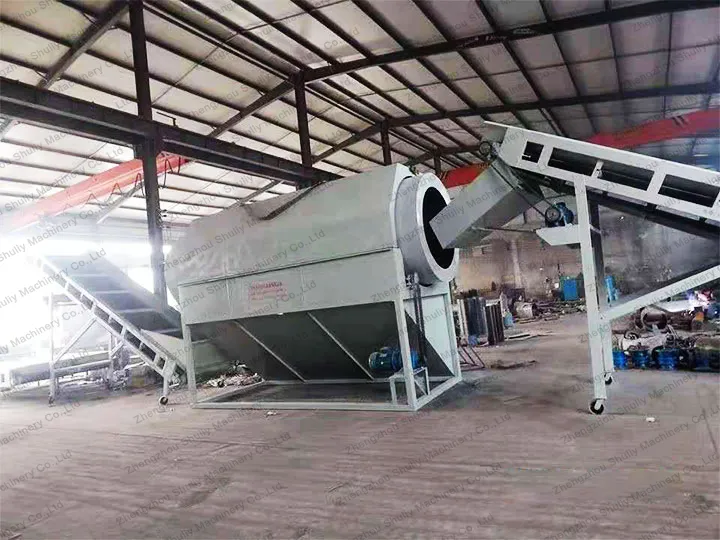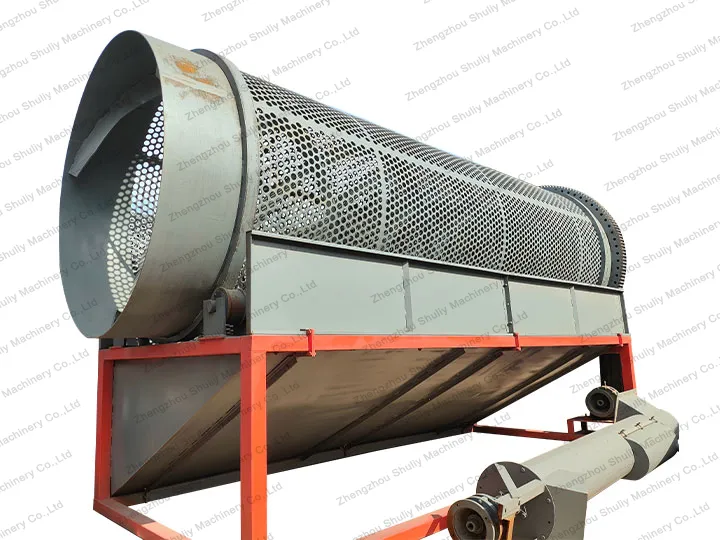Tumbler screens, an important pre-treatment equipment in waste plastic bottle recycling and the waste plastics industry. It can effectively improve the efficiency and quality of waste treatment and reduce the impact of impurities on the quality of recycled plastics.
Introduction of Trommel Screen
Tumbler screen is a kind of efficient screening equipment, widely used in mining, building materials, waste disposal, and other industries. Its unique cylindrical drum structure, through the rotary movement, to achieve material classification screening, can effectively separate particles of different sizes, suitable for processing wet, sticky, or irregularly shaped materials.
A trommel screen is a type of separation equipment commonly used in waste plastic recycling facilities for large-capacity processing needs. Generally, plastic recycling lines with a production capacity of 1 ton/h or more are equipped with a tumbler screen to improve production efficiency.
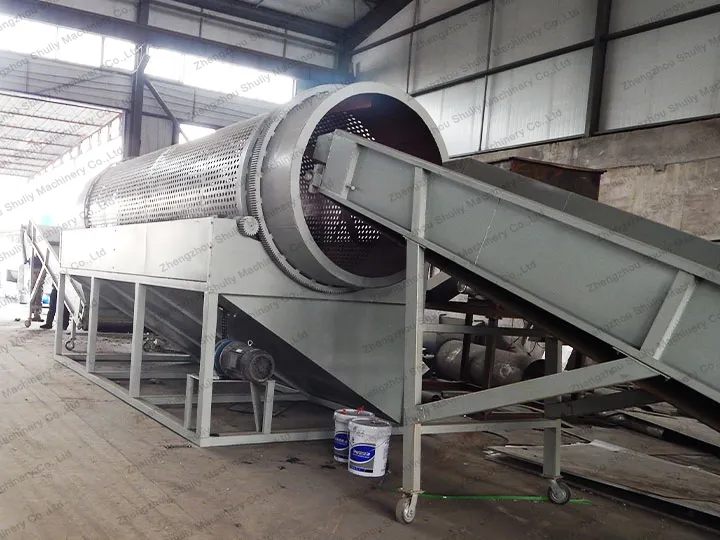
Working Principle of Trommel Screen
Trommels are based on cylindrical drums with holes of different sizes on the surface of the drums according to the screening requirements. The drum is supported by rollers and rotated by a drive unit, whose axis is usually inclined at an angle of 3°-5° to the horizontal, forming an inclined layout from the inlet end to the outlet end.
The working principle of the trommel is to screen and separate the waste plastics through the rotating tumbler screen in order to separate the impurities and materials of different sizes and densities. When dealing with waste plastics, especially materials such as waste plastic bottles, the trommel can effectively separate larger impurities such as wood chunks and stones.
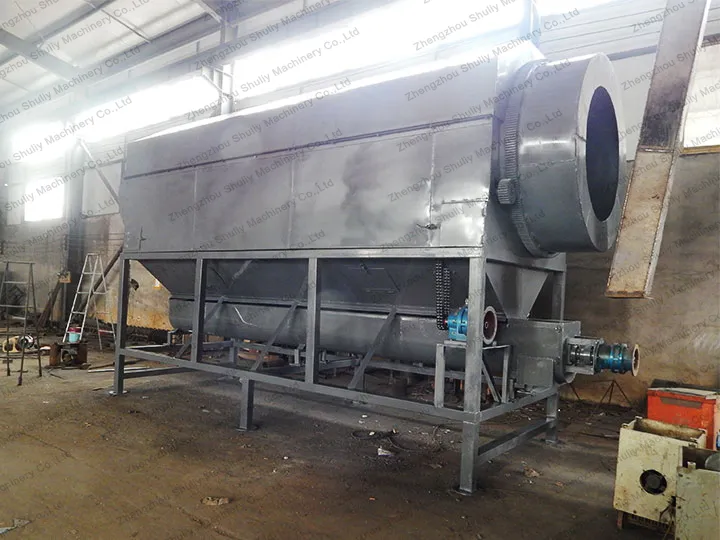
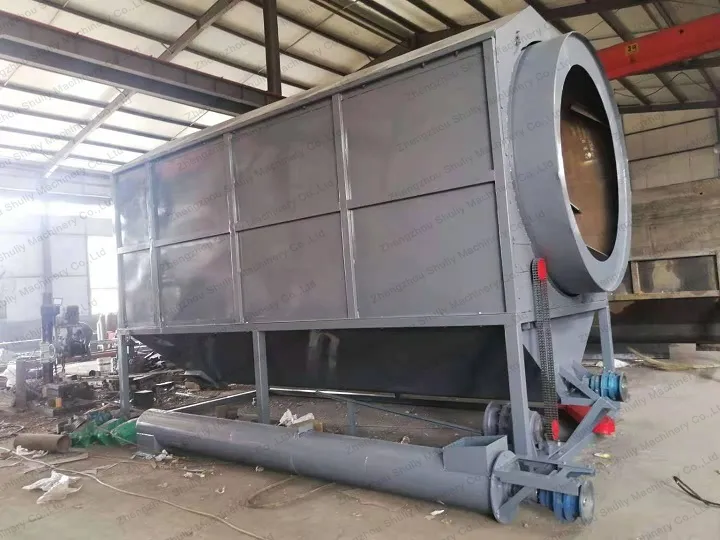
Whole Process of Screen Tumbler
Trommel drum realizes material classification through the combination of a rotating drum and screen, and its working process can be disassembled into the following core stages:
Step 1–Feeding stage:
The material to be screened enters from the high end of the drum and moves along the inner wall under the action of gravity and drum rotation force.
Step 2–Screening process:
Fine particles fall through the holes of the screen and are taken up by the collection device below; larger particles continue to rotate with the drum and move in the axial direction because they cannot pass through the holes.
Step 3–Discharge stage:
Large particles that do not pass through the screen holes are finally discharged from the outlet at the low end of the drum to complete the classification.
Tumbler Screening Machine Core Advantages
- High-efficiency continuous operation: The drum rotates continuously, enabling 24-hour uninterrupted screening.
- Low maintenance cost: With a simple structure and few wear parts, it reduces downtime for repairs.
- Strong adaptability: The size of sieve holes can be adjusted according to requirements, fitting various material characteristics.
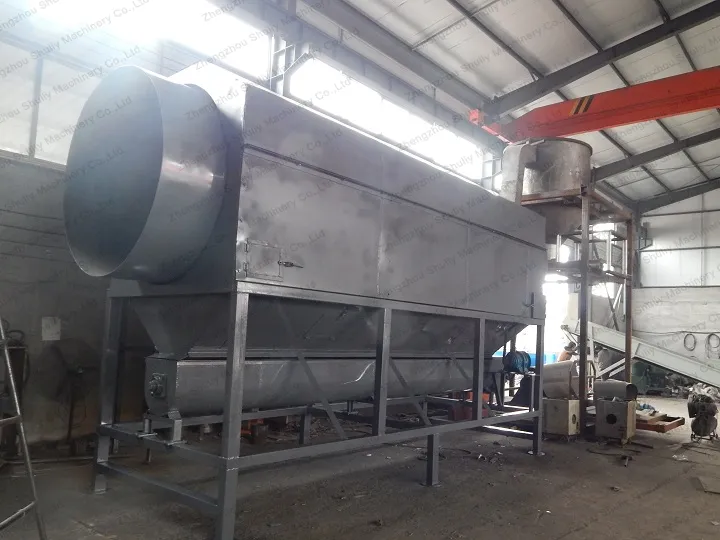
FAQs of Screen Tumbler
What are the common causes of low screening efficiency in the trommel drum?
Common causes include sieve hole blockage, improper drum rotation speed, mismatch between sieve hole size and material particle size, or too small drum inclination, causing insufficient material residence time.
How to solve the problem of sieve hole blockage in the Screen Tumbler?
Measures include: ① Installing built-in spiral blades or brushes to clean sieve holes during rotation; ② Pre-drying wet materials; ③ Using anti-stick coated screens; ④ Regularly stopping for screen cleaning, and replacing woven screens with perforated plate screens if necessary.
How to adjust the screening accuracy of tumbler screens?
Adjustment methods include: ① replace the different aperture screen; ② adjust the drum speed; ③ change the drum angle of inclination
Inquire
If you are interested in our products, want to get more information, or understand the latest news, please leave your contact information, and we will promptly get in touch with you. Thank you for your support!
